
Málaga: A Sun-Kissed Gem on the Costa del Sol
Discover Málaga: A captivating blend of history, art, and sun-soaked beaches in the heart of Spain's Costa del Sol.
Málaga, nestled on Spain's southern coast, is a city where the sun seems to shine eternally. Known for its rich history and vibrant culture, Málaga offers a unique blend of ancient and modern attractions. The city is the birthplace of Pablo Picasso, and you can explore his legacy at the Picasso Museum, which houses an impressive collection of his works. The Alcazaba, a Moorish fortress overlooking the city, provides stunning views and a glimpse into Málaga's past. The city’s vibrant port area has been transformed into a modern space with shops, restaurants, and the striking Pompidou Centre Málaga. Stroll along the palm-lined promenades and enjoy the sea breeze as you discover local cuisine at one of the many tapas bars. The historic city center, with its narrow streets and charming squares, is perfect for wandering and soaking in the Andalusian atmosphere. Málaga's beaches are a major draw for visitors. La Malagueta is the most popular, offering golden sands and clear waters just a short walk from the city center. For a more secluded experience, head to Playa de la Caleta. Beyond the city, the surrounding Andalusian countryside and nearby towns like Ronda and Granada offer excellent day trips. Whether you're interested in history, art, food, or simply relaxing by the sea, Málaga has something to offer every traveler.
Local tips in Málaga
- Visit the Alcazaba early in the morning to avoid crowds and enjoy cooler temperatures.
- Try the local specialty, espeto de sardinas (grilled sardines), at a beachside chiringuito.
- Use public transport or bikes to explore the city; it's efficient and saves you from parking hassles.
- Check out the local festivals like Feria de Málaga in August for a vibrant cultural experience.
- Wear comfortable shoes for walking on the cobblestone streets of the historic center.
Neighbourhoods in Málaga
Málaga: A Sun-Kissed Gem on the Costa del Sol
Málaga, nestled on Spain's southern coast, is a city where the sun seems to shine eternally. Known for its rich history and vibrant culture, Málaga offers a unique blend of ancient and modern attractions. The city is the birthplace of Pablo Picasso, and you can explore his legacy at the Picasso Museum, which houses an impressive collection of his works. The Alcazaba, a Moorish fortress overlooking the city, provides stunning views and a glimpse into Málaga's past. The city’s vibrant port area has been transformed into a modern space with shops, restaurants, and the striking Pompidou Centre Málaga. Stroll along the palm-lined promenades and enjoy the sea breeze as you discover local cuisine at one of the many tapas bars. The historic city center, with its narrow streets and charming squares, is perfect for wandering and soaking in the Andalusian atmosphere. Málaga's beaches are a major draw for visitors. La Malagueta is the most popular, offering golden sands and clear waters just a short walk from the city center. For a more secluded experience, head to Playa de la Caleta. Beyond the city, the surrounding Andalusian countryside and nearby towns like Ronda and Granada offer excellent day trips. Whether you're interested in history, art, food, or simply relaxing by the sea, Málaga has something to offer every traveler.
When is the best time to go to Málaga?
Iconic landmarks you can’t miss
Alcazaba
Explore the stunning Alcazaba of Málaga, a historic fortress showcasing Moorish architecture, breathtaking views, and a rich cultural heritage.
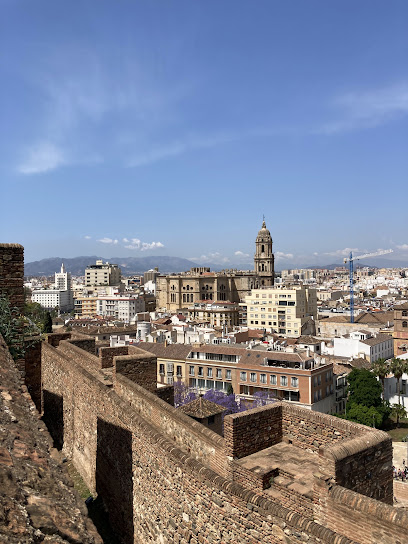
Santa Iglesia Catedral Basílica de la Encarnación
Discover the stunning Santa Iglesia Catedral Basílica de la Encarnación, a masterpiece of Gothic and Renaissance architecture in the heart of Málaga.
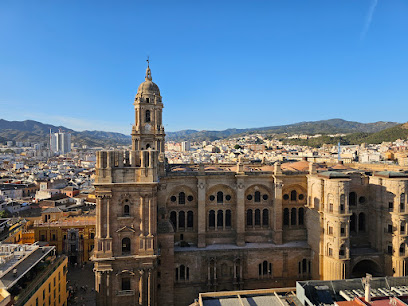
Picasso Museum Málaga
Discover the artistic brilliance of Pablo Picasso at the Picasso Museum Málaga, showcasing masterpieces in a stunning historical setting.

Castillo de Gibralfaro
Discover the breathtaking Castillo de Gibralfaro in Málaga, a medieval fortress offering stunning views, rich history, and a glimpse into Spain's past.

Centre Pompidou Malaga
Explore contemporary art at Centre Pompidou Malaga, a cultural landmark showcasing innovative exhibitions and vibrant artistic experiences.
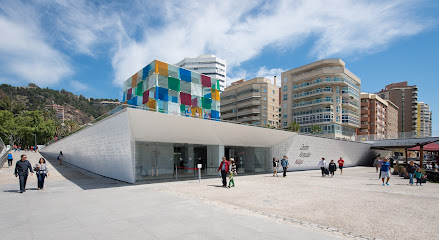
Jardín Botánico - Histórico La Concepción
Explore the lush landscapes and historical charm of Jardín Botánico - Histórico La Concepción, a serene botanical garden in Málaga that enchants every visitor.

Málaga Park
Experience the lush beauty and cultural richness of Málaga Park, a serene oasis in the heart of Málaga perfect for relaxation and exploration.
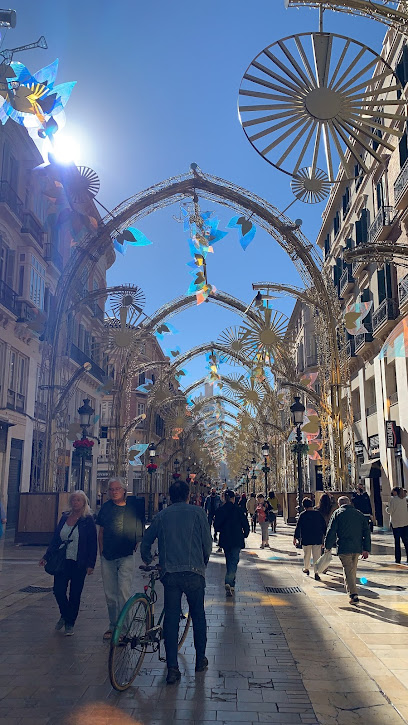
Museo Carmen Thyssen Málaga
Explore the exquisite collection of 19th-century Spanish art at Museo Carmen Thyssen, a cultural gem in the heart of Málaga's historic center.
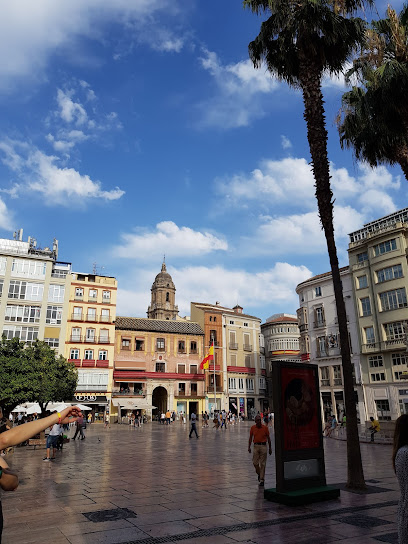
Teatro Romano de Málaga
Experience the allure of ancient history at the Teatro Romano de Málaga, a stunning Roman theater in the heart of the city that brings the past to life.
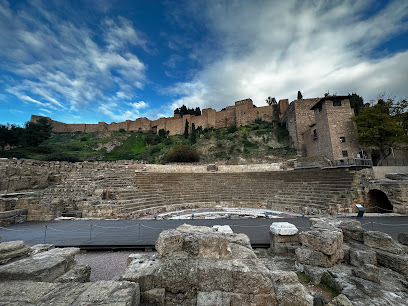
Malaga Museum
Explore the rich cultural tapestry of Malaga at the Malaga Museum, where history and art come alive in a stunning setting.
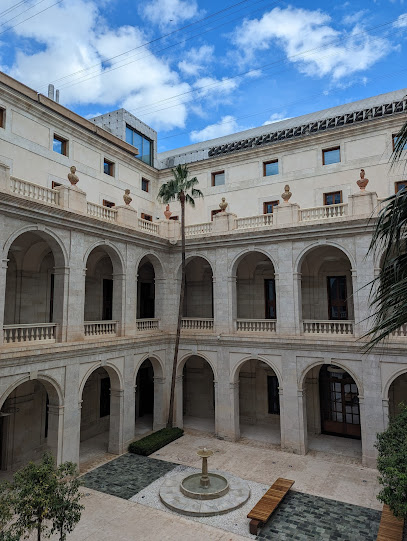
Mirador de Gibralfaro
Discover stunning panoramic views of Málaga and the Mediterranean at the Mirador de Gibralfaro, a must-visit scenic spot for every traveler.
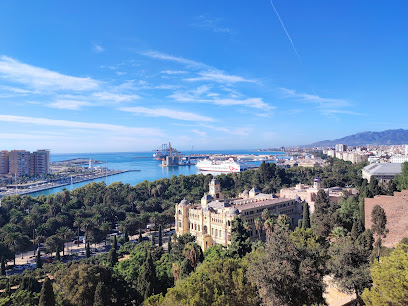
La Farola de Málaga
Discover the timeless beauty of La Farola de Málaga, a historic lighthouse offering stunning views and a glimpse into the city's maritime legacy.
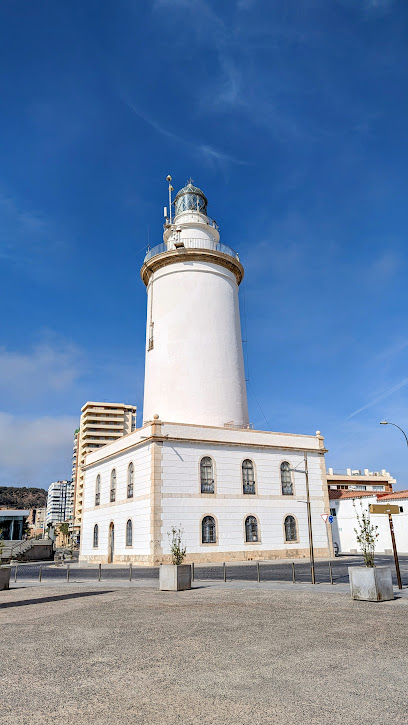
Plaza de la Constitución
Discover the vibrant charm of Plaza de la Constitución in Málaga, where history, culture, and local life converge in a stunning architectural setting.
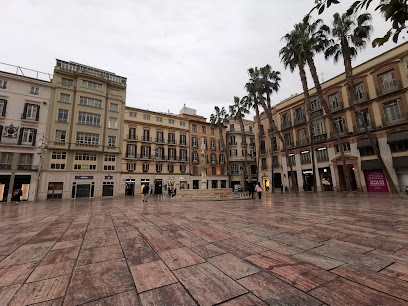
Jardines de Pedro Luis Alonso
Explore the lush beauty and historical charm of Jardines de Pedro Luis Alonso, a serene escape in the heart of Málaga, perfect for relaxation and inspiration.

Monumento al Marqués de Larios
Explore the Monumento al Marqués de Larios, a stunning sculpture in Málaga that celebrates the city’s rich cultural heritage and vibrant atmosphere.

Unmissable attractions to see
Mercado Central de Atarazanas
Discover the vibrant flavors and rich history of Málaga at Mercado Central de Atarazanas, a must-visit market for every traveler.
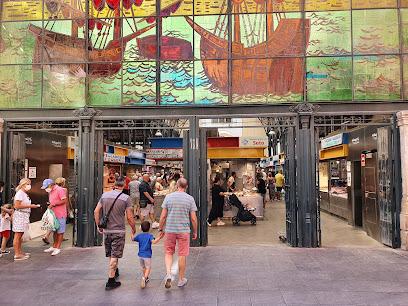
Puerto Marina Benalmádena Official
Experience the best of Costa del Sol at Puerto Marina Benalmádena, a vibrant hub for dining, shopping, and water activities, perfect for all travelers.

Alcazaba
Discover the historic Alcazaba of Málaga, a majestic fortress steeped in Moorish history, offering stunning views and a unique cultural experience.
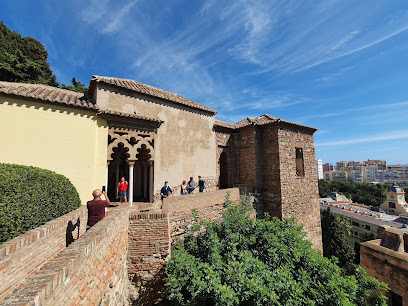
Caminito del Rey . North Access
Experience the breathtaking beauty of Caminito del Rey, a thrilling hiking adventure in Málaga, Spain, surrounded by stunning landscapes and rich history.
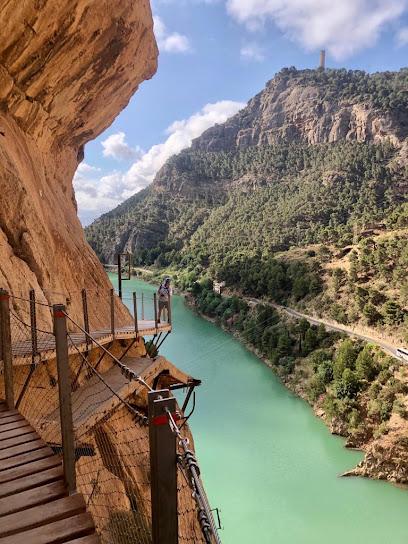
Santa Iglesia Catedral Basílica de la Encarnación
Experience the stunning beauty and spiritual depth of Málaga's Santa Iglesia Catedral Basílica de la Encarnación, a blend of architectural styles and rich history.
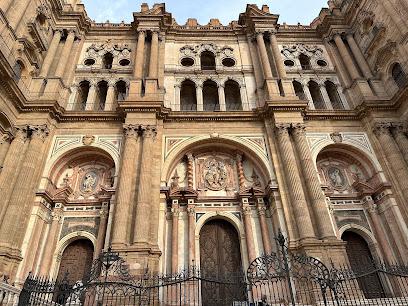
Museo Picasso Málaga
Explore the rich artistic heritage of Pablo Picasso at the Museo Picasso Málaga, located in a stunning historic palace in the heart of the city.
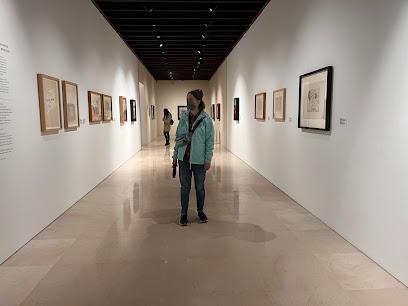
Parque de la Paloma
Explore the lush landscapes and vibrant wildlife at Parque de la Paloma, Benalmádena's premier park and tourist attraction.
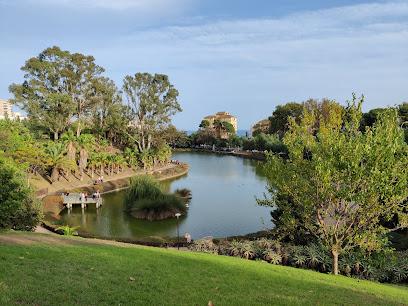
Colomares Castle
Explore Colomares Castle, an architectural gem in Benalmádena celebrating Columbus's legacy with stunning views and rich history.
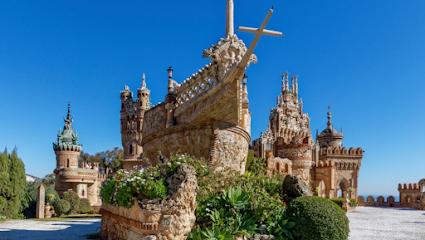
Castillo de Gibralfaro
Experience history at Castillo de Gibralfaro, a stunning fortress offering breathtaking views and rich cultural heritage in the heart of Málaga.
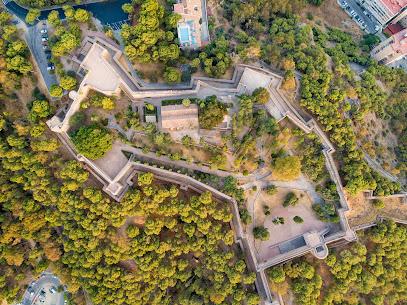
Playa Burriana
Experience the beauty and vibrant atmosphere of Playa Burriana, a stunning public beach in Nerja, Málaga, where relaxation meets Mediterranean charm.
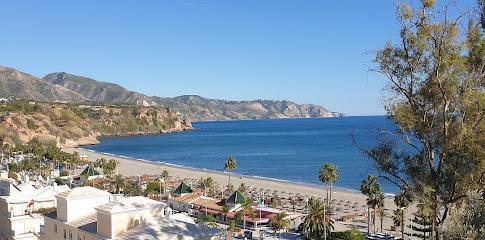
Plaza de los Naranjos
Explore the enchanting Plaza de los Naranjos in Marbella, a vibrant square filled with history, stunning architecture, and delightful local flavors.
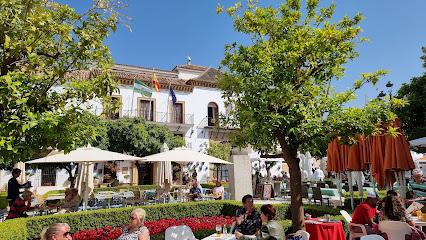
Centre Pompidou Málaga
Discover contemporary art and culture at the Centre Pompidou Málaga, a vibrant destination for art enthusiasts and curious travelers alike.
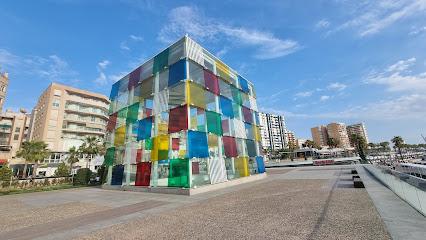
Jardín Botánico - Histórico La Concepción
Experience the lush beauty and rich history of Jardín Botánico - Histórico La Concepción in Málaga, a serene oasis of flora and tranquility.
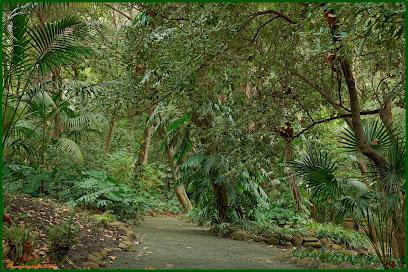
Málaga Park
Experience the lush landscapes and vibrant atmosphere of Málaga Park, an urban oasis nestled in the heart of the city, perfect for relaxation and exploration.

Selwo Marina
Experience the thrill of marine life and exotic wildlife at Selwo Marina, an enchanting animal park in beautiful Benalmádena, Málaga.

Essential places to dine
El Pimpi
Discover authentic Andalusian flavors at El Pimpi in Málaga – a culinary hotspot combining tradition and vibrant atmosphere.
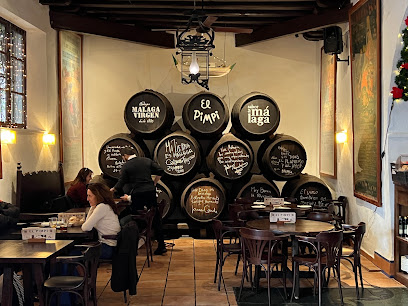
Casa Lola
Discover Casa Lola in Málaga – where authentic tapas meet warm Andalusian hospitality in a vibrant bistro setting.
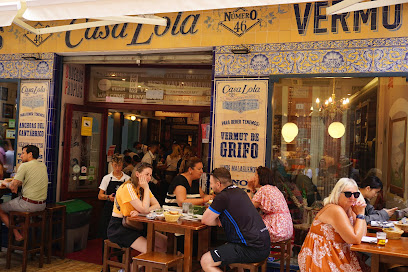
Restaurante Italiano Da Saveria
Discover authentic Italian flavors at Restaurante Italiano Da Saveria in Málaga's vibrant center – where every meal feels like a celebration.

Uvedoble Taberna
Discover the vibrant flavors of Spain at Uvedoble Taberna, where every bite is a celebration of Andalusian cuisine.
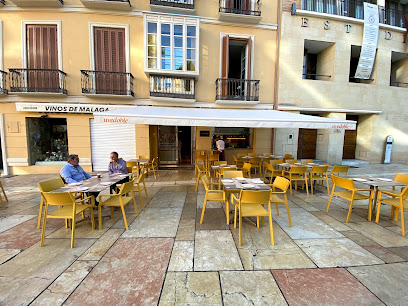
Kraken Centro - Tapas Restaurant
Discover authentic Spanish tapas at Kraken Centro in Málaga - where every dish tells a story of tradition and flavor.
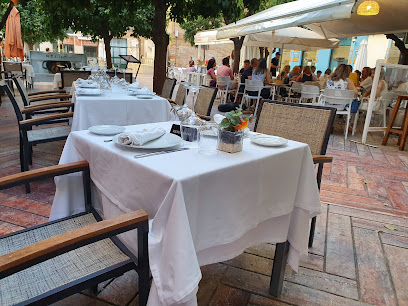
Amigos Málaga Centro
Discover the vibrant culinary fusion at Amigos Málaga Centro with exquisite Indian and Mexican dishes crafted for every taste.
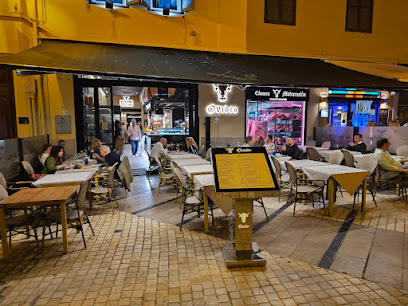
El Mesón de Cervantes
Experience authentic Spanish cuisine at El Mesón de Cervantes, where delightful tapas meet an extensive wine selection in the heart of Málaga.
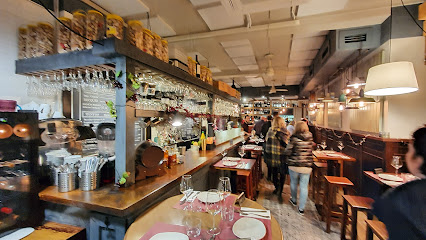
Mesón Mariano
Experience authentic Spanish cuisine at Mesón Mariano in Málaga – where tradition meets flavor in every bite.
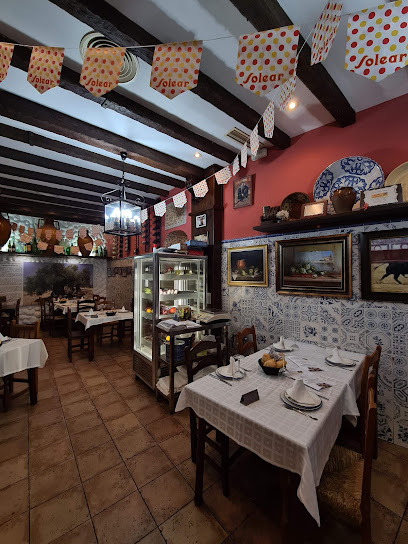
Andino Gastrobar - Centro
Experience authentic Chilean and Peruvian flavors at Andino Gastrobar - Centro in Málaga, where every dish is a celebration of Latin American cuisine.
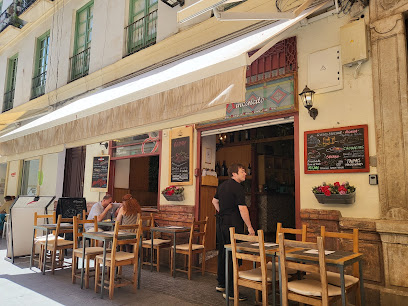
El Gastronauta
Experience exquisite Mediterranean flavors at El Gastronauta in Málaga – where every meal is a celebration of Spanish culinary traditions.
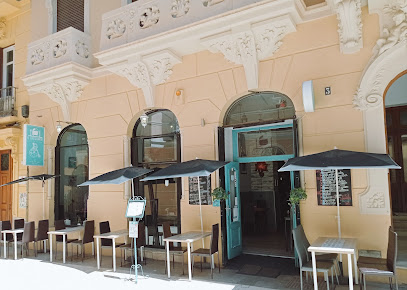
Trattoria Mamma Franca
Experience authentic Italian cuisine at Trattoria Mamma Franca in Málaga, where every dish is crafted with passion and tradition.

Buenavista Gastrobar & Tapas
Savor exquisite Mediterranean cuisine at Buenavista Gastrobar & Tapas in Málaga – where tradition meets culinary innovation.
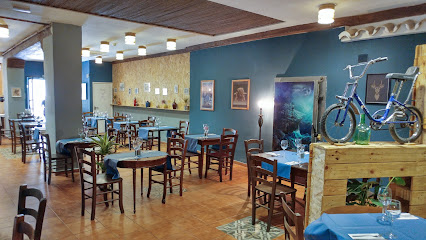
La Cosmopolita Malagueña | Dani Carnero | Restaurant in Malaga
Experience authentic Mediterranean and Spanish cuisine at La Cosmopolita Malagueña in Málaga – A culinary journey through tradition and flavor.
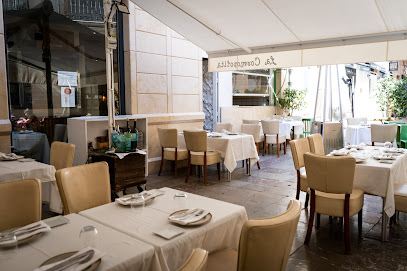
L'expérience
Discover authentic Mediterranean flavors at L'expérience in Málaga's vibrant Centro district – where every meal tells a story.
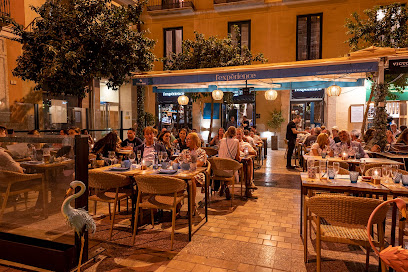
Beluga - Mediterranean Restaurant
Experience culinary artistry at Beluga - where Mediterranean flavors meet modern European flair in the heart of Málaga.
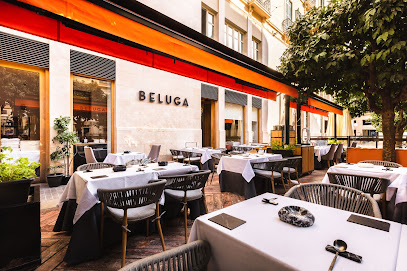
Markets, malls and hidden boutiques
Mercado Central de Atarazanas
Experience the flavors and culture of Málaga at Mercado Central de Atarazanas, a vibrant market full of fresh produce and local delicacies.
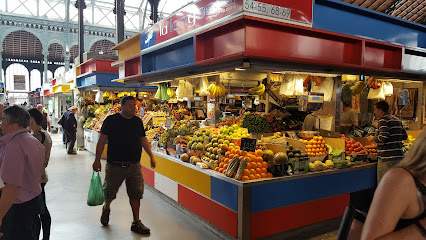
Plaza Mayor
Discover a shopping paradise at Plaza Mayor in Málaga, where vibrant culture meets an array of shops, dining, and entertainment experiences.
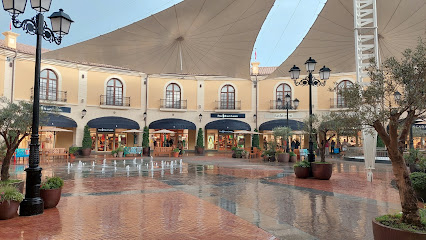
Centro Comercial Larios Centro
Experience vibrant shopping, dining, and entertainment at Centro Comercial Larios Centro in Málaga, where modern convenience meets local charm.
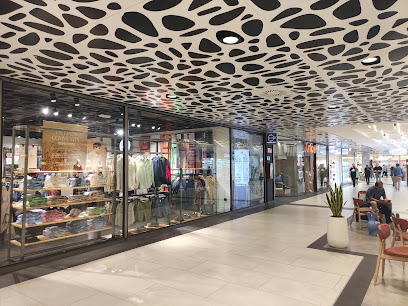
Vialia Centro Comercial
Discover Vialia Centro Comercial in Málaga, a vibrant shopping mall offering a wide variety of stores, dining options, and entertainment for all visitors.
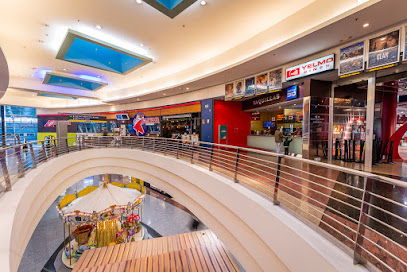
El Corte Inglés Málaga Edificio 1
Discover the ultimate shopping experience at El Corte Inglés Málaga, where fashion, food, and local culture unite in a vibrant atmosphere.
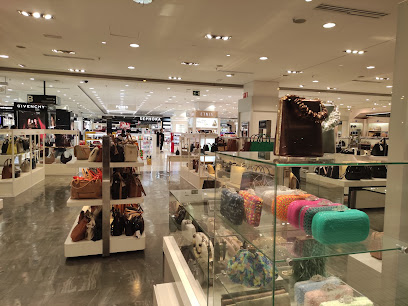
Designer Outlet Malaga
Discover unbeatable discounts on top designer brands at Designer Outlet Malaga, your ultimate shopping destination in Spain.
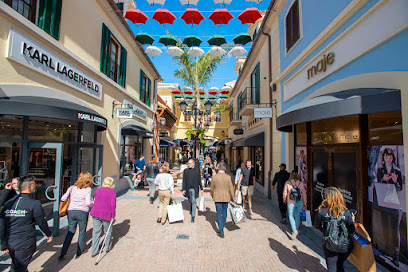
Málaga Plaza
Discover Málaga Plaza, a vibrant shopping mall filled with diverse stores, delightful dining, and a lively atmosphere in the heart of Málaga.
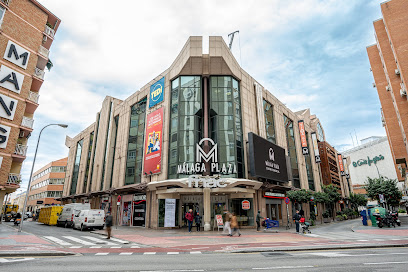
Factory Outlet
Discover unbeatable deals on top brands at Málaga Factory Outlet, the ultimate shopping destination for visitors in the heart of Churriana.
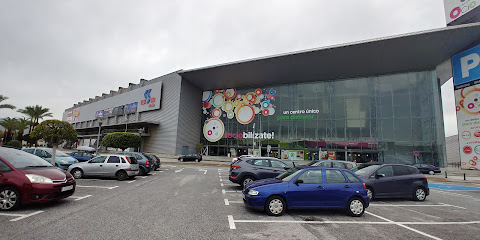
ZARA
Discover stylish trends in the heart of Málaga at ZARA, where fashion meets affordability for the modern traveler.
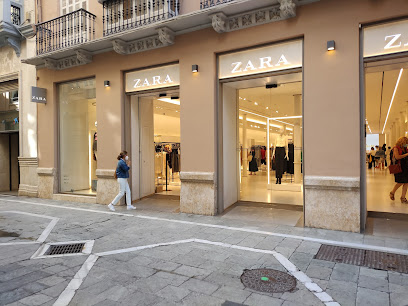
Next Level Specialty Coffee
Explore Málaga's vibrant coffee culture at Next Level Specialty Coffee, where exceptional brews meet delectable breakfast delights in a cozy setting.
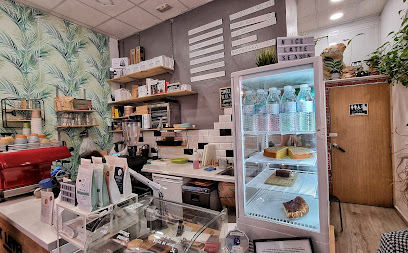
ALE-HOP
Discover unique souvenirs and stylish home goods at ALE-HOP, the ultimate gift shop in the heart of Málaga, offering a taste of local culture.

40 degrees in the shade
Explore the charm of Málaga at 40 Degrees in the Shade, where exquisite jewelry meets local artistry in a delightful shopping experience.
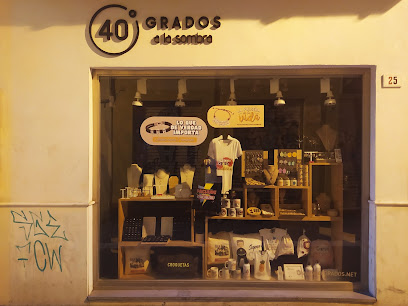
Flying Tiger Copenhagen
Explore a whimsical world of unique gifts and home goods at Flying Tiger Copenhagen in Málaga, where creativity meets affordability.
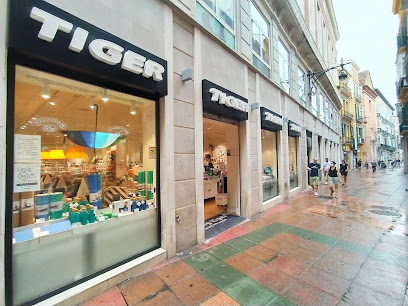
Stradivarius
Discover modern fashion at Stradivarius in Málaga – a must-visit women's clothing store for chic styles and vibrant accessories.
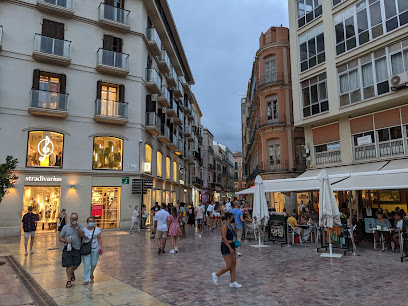
MANGO
Discover contemporary women's fashion at MANGO in Málaga's vibrant Centro district, blending style and affordability in a chic shopping destination.
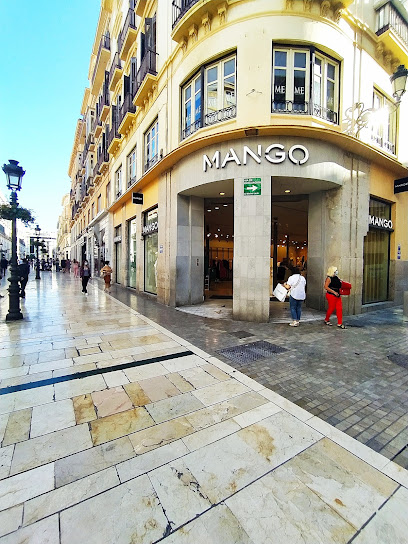
Essential bars & hidden hideouts
Premier Room Center
Discover the lively atmosphere of Premier Room Center, a must-visit pub in the heart of Málaga, for a taste of local nightlife and culture.
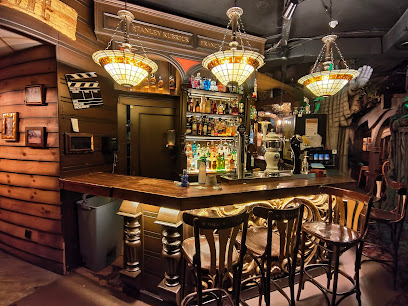
Nusa Malaga
Experience the best cocktails in Málaga at Nusa Malaga while enjoying stunning Mediterranean views and a lively atmosphere.
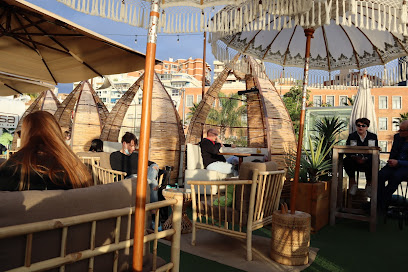
ZZ PUB
Discover the heart of Málaga's nightlife at ZZ Pub, a lively bar and concert venue showcasing the best blues and jazz music.
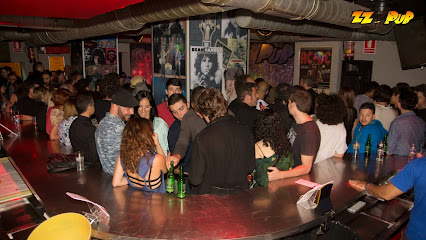
Sherlock Holmes
Experience the charm of British pub culture at the Sherlock Holmes Pub in Málaga, offering an exciting selection of drinks and delicious food.
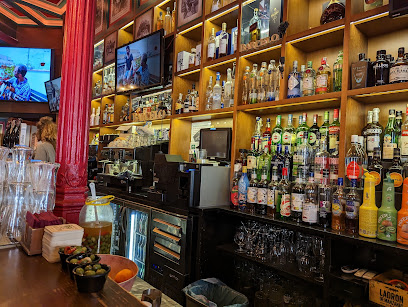
La Terraza De Valeria
Experience the best of Málaga from above at La Terraza De Valeria, where exquisite cocktails meet stunning views in a vibrant atmosphere.
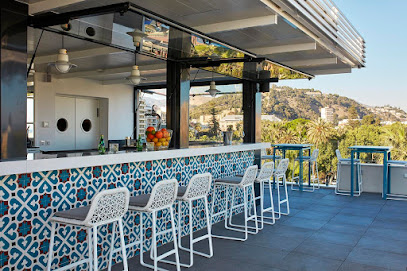
Mojito Bar
Experience the lively spirit of Málaga at Mojito Bar, a cocktail haven offering exquisite drinks and an unforgettable nightlife ambiance.
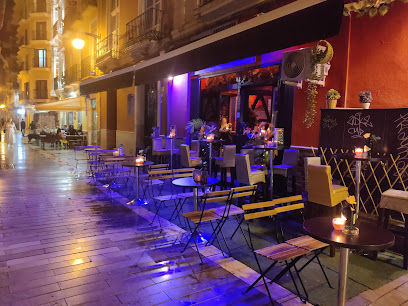
Chester & Punk - Málaga
Discover the vibrant cocktail scene at Chester & Punk in Málaga, where innovative drinks and lively ambiance await every visitor.
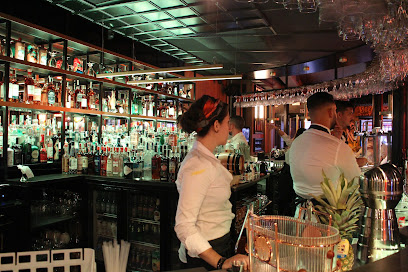
Speakeasy “The Pharmacy”
Experience the unique charm of Speakeasy “The Pharmacy”, a hidden bar in Málaga offering extraordinary cocktails and an inviting atmosphere.
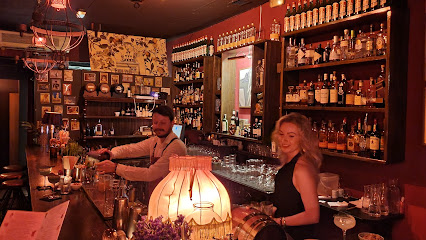
Mañana Cocktail Bar Malaga
Discover the best of Malaga's nightlife at Mañana Cocktail Bar, famous for its unique cocktails and vibrant atmosphere.
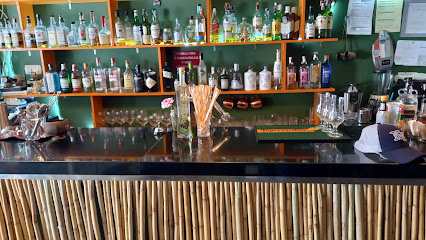
The Shakespeare
Experience the warm ambience and extensive drink selection at The Shakespeare, a charming bar in Málaga's bustling Centro district.
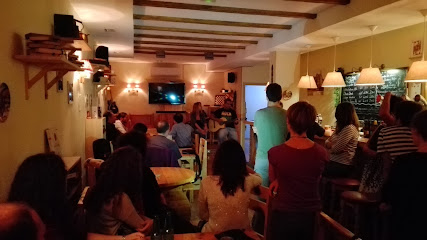
Renard Cocktail Club
Experience the vibrant nightlife of Málaga at Renard Cocktail Club, where innovative cocktails meet a chic atmosphere for unforgettable evenings.
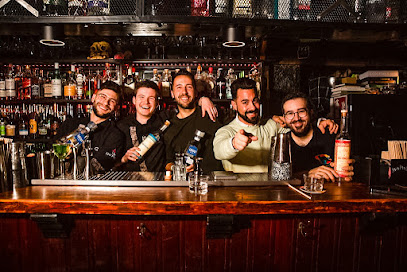
Moonlight - Bar de Copas
Discover the vibrant nightlife of Málaga at Moonlight - Bar de Copas, where cocktails and good vibes create unforgettable evenings.
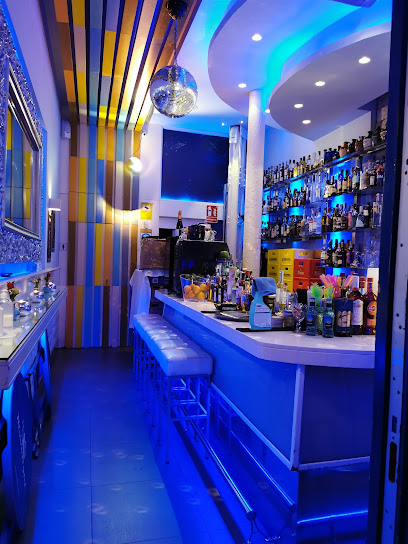
CHLOE Bar - Málaga
Discover the lively atmosphere of CHLOE Bar in Málaga, where expertly crafted cocktails and a friendly vibe create an unforgettable nightlife experience.
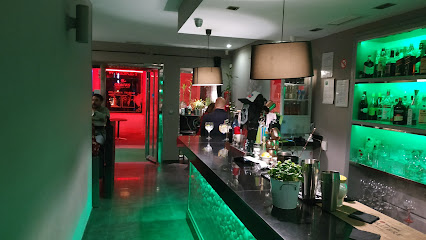
Road House
Discover the lively Road House in Málaga, where blues, jazz, and rock music come alive in a charming dive bar atmosphere.
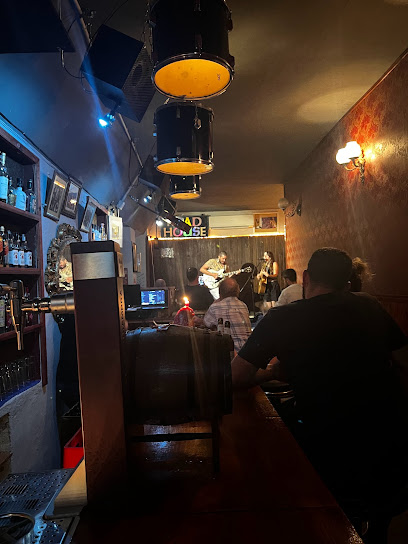
Gin Corner soho
Discover Gin Corner Soho in Málaga – a cocktail haven with a wide selection of gins and a vibrant atmosphere for an unforgettable night out.
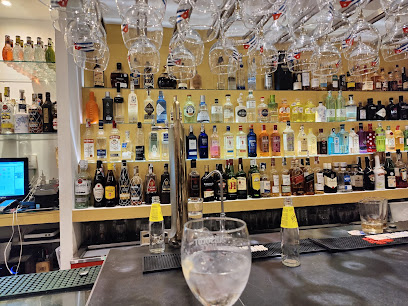
Local Phrases
-
- HelloHola
[oh-lah] - GoodbyeAdiós
[ah-dee-ohs] - YesSí
[see] - NoNo
[noh] - Please/You're welcomePor favor
[por fah-bor] - Thank youGracias
[grah-thyahs] - Excuse me/SorryPerdón
[pehr-dohn] - How are you?¿Cómo estás?
[koh-moh ehs-tahs] - Fine. And you?Bien. ¿Y tú?
[bee-ehn. ee too] - Do you speak English?¿Hablas inglés?
[ah-blahs een-glays] - I don't understandNo entiendo
[noh ehn-tyen-doh]
- HelloHola
-
- I'd like to see the menu, pleaseMe gustaría ver la carta, por favor
[meh goos-tah-ree-ah vehr lah kahr-tah, por fah-bor] - I don't eat meatNo como carne
[noh koh-moh kahr-neh] - Cheers!¡Salud!
[sah-lood] - I would like to pay, pleaseMe gustaría pagar, por favor
[meh goos-tah-ree-ah pah-gahr, por fah-bor]
- I'd like to see the menu, pleaseMe gustaría ver la carta, por favor
-
- Help!¡Ayuda!
[ah-yoo-dah] - Go away!¡Vete!
[veh-teh] - Call the Police!¡Llama a la policía!
[yah-mah ah lah poh-lee-see-ah] - Call a doctor!¡Llama a un médico!
[yah-mah ah oon meh-dee-koh] - I'm lostEstoy perdido
[ehs-toy pehr-dee-doh] - I'm illEstoy enfermo
[ehs-toy ehn-fehr-moh]
- Help!¡Ayuda!
-
- I'd like to buy...Me gustaría comprar...
[meh goos-tah-ree-ah kohm-prahr...] - I'm just lookingSolo estoy mirando
[soh-loh ehs-toy mee-rahn-doh] - How much is it?¿Cuánto cuesta?
[kwan-toh kwehs-tah] - That's too expensiveEs demasiado caro
[ehs deh-mah-syah-doh kahr-oh] - Can you lower the price?¿Puede bajar el precio?
[pweh-deh bah-hahr ehl pree-syoh]
- I'd like to buy...Me gustaría comprar...
-
- What time is it?¿Qué hora es?
[keh oh-rah ehs] - It's one o'clockEs la una
[ehs lah oo-nah] - Half past (10)Y media
[ee meh-dee-ah] - MorningMañana
[mah-nyah-nah] - AfternoonTarde
[tahr-deh] - EveningNoche
[noh-cheh] - YesterdayAyer
[ah-yehr] - TodayHoy
[oy] - TomorrowMañana
[mah-nyah-nah] - 1Uno
[oo-noh] - 2Dos
[dohs] - 3Tres
[trehs] - 4Cuatro
[kwah-troh] - 5Cinco
[theen-koh] - 6Seis
[sehs] - 7Siete
[syeh-teh] - 8Ocho
[oh-choh] - 9Nueve
[nwheh-veh] - 10Diez
[dyehth]
- What time is it?¿Qué hora es?
-
- Where's a/the...?¿Dónde está...?
[dohn-deh ehs-tah] - What's the address?¿Cuál es la dirección?
[kwal ehs lah dee-rehk-syohn] - Can you show me (on the map)?¿Puedes mostrarme (en el mapa)?
[pweh-dehs mohs-trar-meh (ehn ehl mah-pah)] - When's the next (bus)?¿Cuándo es el próximo (autobús)?
[kwan-doh ehs ehl proh-ksy-moh (ow-toh-boos)] - A ticket (to ....)Un billete (a ....)
[oon bee-yeh-teh (ah)]
- Where's a/the...?¿Dónde está...?
History of Málaga
-
Málaga was founded by the Phoenicians around 770 BC and was originally named Malaka. The Phoenicians established the city as a trading port, taking advantage of its strategic location along the Mediterranean coast. Archaeological remains, including pottery and ancient harbor structures, give us insight into this early period of Málaga's history.
-
In 218 BC, Málaga came under Roman rule. The city flourished as a center of commerce and industry, particularly known for its fish-salting and garum (fermented fish sauce) production. The Romans left behind significant architectural contributions, including the Roman Theatre, which still stands today at the foot of the Alcazaba fortress.
-
After the fall of the Western Roman Empire, Málaga experienced a period of decline. It came under Visigothic control in the 5th century AD, and later, the Byzantines managed to capture it in the 6th century. During this time, the city served as a strategic military outpost and saw limited economic activity.
-
In 711 AD, Málaga was conquered by Muslim forces. Under Moorish rule, the city became an important trading hub in the Al-Andalus region. The Nasrid dynasty, who ruled from the 13th to the 15th centuries, left a lasting legacy with the construction of the Alcazaba and Gibralfaro castles. These fortifications, along with the city's vibrant souks, made Málaga a focal point of Moorish culture and architecture.
-
Málaga was reconquered by Christian forces in 1487, during the Reconquista. The Catholic Monarchs, Ferdinand and Isabella, laid siege to the city for several months before it finally surrendered. The aftermath saw significant changes in the city's demographic and cultural landscape, as many Moors were expelled, and new settlers arrived from other parts of Spain.
-
The 16th and 17th centuries were periods of rebuilding and development for Málaga. The city saw the construction of prominent religious and civic buildings, such as the Málaga Cathedral, also known as 'La Manquita' ('The One-Armed Lady') due to its unfinished second tower. Art and culture flourished during this time, with the introduction of Renaissance and Baroque styles influencing local architecture.
-
In the 19th century, Málaga experienced significant industrial growth, becoming one of the leading centers for textile manufacturing and iron production in Spain. The city's port was modernized, facilitating increased trade and economic prosperity. The Larios family played a crucial role during this period, investing in various industrial and infrastructural projects that transformed Málaga's economy.
-
The 20th century brought both challenges and progress to Málaga. The Spanish Civil War (1936-1939) left its mark on the city, but the post-war years saw gradual recovery. By the mid-20th century, Málaga began to emerge as a popular tourist destination, capitalizing on its pleasant climate, beautiful beaches, and rich cultural heritage. Today, Málaga is a vibrant city that balances its historical legacy with modern development, making it a must-visit destination in Spain.
Málaga Essentials
-
Málaga is well-connected by air, rail, and road. Málaga-Costa del Sol Airport (AGP) is the main international gateway, located about 8 kilometers southwest of the city center. It offers numerous flights to and from major cities across Europe and beyond. The airport is connected to the city center by train, bus, and taxi services. If coming by train, the high-speed AVE trains connect Málaga to Madrid and other major Spanish cities. For those driving, Málaga is accessible via the A-7 and AP-7 motorways.
-
Public transportation in Málaga is efficient and affordable. The city has an extensive bus network operated by EMT Málaga, which covers most tourist attractions and neighborhoods. The Málaga Metro has two lines that connect key areas of the city. Taxis are also readily available and can be hailed on the street or booked via apps. For a more scenic route, consider renting a bike or using the city's bike-sharing program, MálagaBici. Renting a car can be a good option if you plan to explore the surrounding areas.
-
The official currency in Spain is the Euro (€). Credit and debit cards are widely accepted in most hotels, restaurants, and shops. However, it's advisable to carry some cash for smaller establishments and market purchases. ATMs are plentiful throughout the city and offer services in multiple languages. Currency exchange services are available at the airport, banks, and exchange offices.
-
Málaga is generally a safe city, but like any urban area, it's important to stay vigilant. Petty crimes such as pickpocketing can occur, especially in crowded areas like Calle Larios, the port, and the central market. Avoid walking alone at night in poorly lit areas and always be aware of your surroundings. Keep your belongings secure and avoid displaying valuable items in public.
-
In case of emergency, dial 112 for immediate assistance (police, fire, and medical services). The main hospital in Málaga is Hospital Regional Universitario de Málaga, which provides comprehensive medical services. Pharmacies ("farmacias") are available throughout the city, and many have 24-hour service. It is advisable to have travel insurance that covers medical emergencies.
-
Fashion: Do wear comfortable and casual clothing, but dress modestly when visiting religious sites. Avoid beachwear outside of beach areas. Religion: Do respect local customs and traditions. When visiting churches, dress modestly and stay quiet. Public Transport: Do be polite and give up your seat to the elderly or disabled. Don’t eat or drink on public transport. Greetings: Do greet people with a handshake and say 'Hola' or 'Buenas'. Eating & Drinking: Do try local dishes like tapas and paella. Don't rush through meals; dining is a leisurely activity in Spain.
-
To experience Málaga like a local, start your day with a typical Spanish breakfast of 'churros con chocolate' at a local café. Wander through the Atarazanas Market to sample fresh local produce and seafood. Visit the lesser-known beaches like Playa de la Malagueta for a more relaxed atmosphere. Attend a flamenco show or a local festival to immerse yourself in the vibrant culture. Lastly, explore the historic neighborhoods such as El Palo and Pedregalejo for authentic dining experiences and a glimpse of local life.
Trending Landmark in Málaga
-
Alcazaba
-
Santa Iglesia Catedral Basílica de la Encarnación
-
Picasso Museum Málaga
-
Castillo de Gibralfaro
-
Centre Pompidou Malaga
-
Jardín Botánico - Histórico La Concepción
-
Málaga Park
-
Museo Carmen Thyssen Málaga
-
Teatro Romano de Málaga
-
Malaga Museum
-
Mirador de Gibralfaro
-
La Farola de Málaga
-
Plaza de la Constitución
-
Jardines de Pedro Luis Alonso
-
Monumento al Marqués de Larios
Nearby Cities to Málaga
-
Things To Do in Ronda
-
Things To Do in Catalan Bay
-
Things To Do in Moorish Castle
-
Things To Do in Casemates Square
-
Things To Do in Gibraltar
-
Things To Do in Main Street
-
Things To Do in St. Michael's Cave
-
Things To Do in Alameda Botanic Gardens
-
Things To Do in Queensway Quay Marina
-
Things To Do in Gorham's Cave Complex
-
Things To Do in Europa Point
-
Things To Do in Tetouan
-
Things To Do in Seville
-
Things To Do in Tangier
-
Things To Do in Cádiz

















